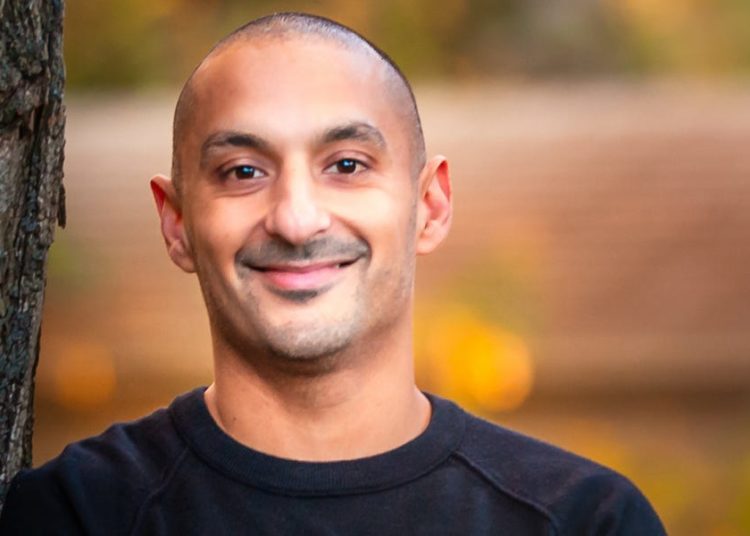Ira Sachs couldn’t sleep. He was busy thinking about how he would shoot his next movie, which was set in a single apartment.
The idea to make a “bottle movie” came to Sachs around four years ago when he was gearing up to shoot the romantic drama “Passages.” He ran across an interview transcript between Peter Hujar, a photographer Sachs had long admired, and writer Linda Rosenkrantz, in which the two gabbed in her Manhattan apartment in 1974.
For Sachs, who typically directs muted, human dramas, the unwieldy relationships and relatively large scale of 2023’s “Passages” had him looking for a smaller project to do next. He kicked around the idea of adapting the interview with Hujar but knew that filming in just one space was a high-stakes gambit.
“It felt like a great risk, but I think without risk there’s no beauty,” Sachs, 59, says on a Zoom call. “That is what I take away from what Peter shares with us, that every moment as an artist is a risk, but also there is the potential for the discovery of something totally new.”
Nearly 50 years earlier, Rosenkrantz began working on a simple creative project. She would interview her friends in detail about what they did the prior day. One of those conversations is re-created in “Peter Hujar’s Day,” the title subject rhapsodizing about hustling as a working photographer in New York. His day appears simple enough at first. In the film, Hujar (Ben Whishaw) tells Rosenkrantz (Rebecca Hall) about how he rushed off to shoot Allen Ginsberg for the New York Times and ate Chinese takeout for dinner, name-dropping Susan Sontag, Fran Lebowitz and William Burroughs along the way.
Yet “Peter Hujar’s Day” really takes off when the two talk about the financial frustrations of the city, the difficulty of staying busy and Hujar’s first realizations that he’s aging. (At the time, he was 40.) He recalls buying cigarettes that morning, outraged that a pack is up to 56 cents. And in a critical admission, he shares that he’s disappointed in how the photos of Ginsberg turned out.
Sachs knew from the beginning that “Peter Hujar’s Day” would be set in Rosenkrantz’s Upper East Side apartment, but the transcript itself doesn’t clarify how long the two were talking on that day. The timetable for the discussion remained up in the air even as Sachs set about assembling his crew. For director of photography Alex Ashe, the decision to set Hujar and Rosenkrantz’s discussion from morning through sundown was “the revelation that kind of unlocked the film for us,” he says.
Ashe, 35, knew that capturing the changing light in the apartment and adding cinematic “ellipses” would be necessary to show the passage of time, a filmmaking challenge that would supply a feature-long conversation with some cinematic heft. They started looking for the right apartment to replicate Rosenkrantz’s former home in. (She now lives in Santa Monica.) Production designer Stephen Phelps wanted particular details like large windows so they could emphasize the passage of time.
“It’s harder and harder to find these New York apartments that feel like they’ve been around for a while,” Phelps, 42, says. “If we find something that’s got old windows and other elements, even like the locks on the door and the types of things that just look from the time, being able to dress it and bring in our color scheme will be much more fluid.”
The question of where they would film was answered when Westbeth, a nonprofit that connects artists with housing, donated space for “Peter Hujar’s Day” to shoot in one of their buildings in the West Village, overlooking the Hudson River. Sachs and other crew members checked out a few rooms before falling in love with an empty office space, complete with giant windows and a unique floor plan.
Months before shooting in spring 2024, the crew for “Peter Hujar’s Day” had access to the apartment space so Phelps could rebuild much of the kitchen and paint the walls. That period of preparation is when Ashe and Sachs began setting up scenes based on how the natural light struck the rooms.
“Ira is not a huge fan of rehearsing the actors but he cares a lot about blocking, so we did a lot of blocking rehearsals with stand-ins,” Ashe says. “Once I’d worked out the times of day [for lighting] that I thought were nice, we’d schedule rehearsals around then. We got to look at real people in a lot of these real lighting scenarios.”
With an ideal set being constructed and a sense of cinematic time organized, things were falling into place. Sachs rewatched classic, conversation-driven films with outsized personalities, such as Robert Altman’s stagey run of movies in the early ’80s (“Come Back to the 5 & Dime, Jimmy Dean, Jimmy Dean,” “Secret Honor”) and documentaries like “Portrait of Jason” and “My Girlfriend’s Wedding,” for a confidence boost. But he had doubts remaining about how “Peter Hujar’s Day” could avoid getting stuck as a single-location experiment.
“I couldn’t see how I could jump from a couch to a terrace until I had this sequence of images that we had photographed in my notes app on my phone,” Sachs says, recalling one night where he woke up and realized his collection of shots could work. “Oh, that’s a movie,” he remembers thinking. “That’s a storyboard. Shooting was a re-creation of those still images in moving pictures.”
With Westbeth granting access to the film set plus an additional room for the cast and crew to hang out in, the crew grew accustomed to filming in tight quarters. It never felt spacious,with tons of equipment always slightly out of frame. Sachs enjoyed the experience, though, believing that it forced the cast and crew to become close-knit.
“It was the first time I ever shot in what felt like an old studio because I had everything I needed in one location,” the filmmaker says. “I really liked that. It made for this ease of workflow and collaboration and eating and relaxation.” Their extra room became the commissary, to use an old Hollywood term.
“We miss the commissary,” Sachs says. “The idea of the commissary in our culture, particularly for moviemakers — it’s almost in comparison to the commonality of communal life that Peter lived in ’74 where he has friends who come by and visit and he’s on the phone with five or six people in the course of the day. That flow between individuals is really strengthening to art-making.”
It was the best possible tiny space it could be. But as they prepared the set, concerns of period accuracy began to crop up. For two scenes in which Hujar and Rosenkrantz take a smoke break on her roof, there weren’t many angles they could shoot from. “If you look one inch to the left,” Ashe says, “you’re going to see a modern skyscraper.”
To keep viewers engaged, “Peter Hujar’s Day” needed that strong sense of New York in the 1970s to hover just outside of the apartment, occasionally seeping in as the sound of a jackhammer boomed through an open window. Ashe immediately knew they’d be shooting on 16mm film stock for its fuzzy warmth. But as Phelps worked on the wallpaper and designer Eli Cohn began working on the soundscape that would evoke city life in a steady hum underneath the interview, the crew leaned into an emphasis on atmosphere over perfect accuracy.
Phelps wanted the film’s setting to comfortably echo the photos that Rosenkrantz had of her old Yorkville apartment. He even found a few items that were nearly identical to the things she owned in the ’70s, including a clock in the living room. Still, Phelps didn’t want the set for “Peter Hujar’s Day” to become a one-to-one replica. It had to capture the feeling that Rosenkrantz actually lived there.
“I wanted it to be a natural ’74,” Phelps says. “I kind of wanted to be a little more eclectic with it. You have pieces that you collect over time, so it doesn’t feel like a fully curated space that would be on a magazine cover.”
Cohn’s sound design also offered a taste of the grimy, intense New York of the 1970s, but he wanted to remain flexible in terms of period fidelity. Even if they weren’t straight from 1974, Cohn included sounds — primarily from his library of city field recordings plus some that were newly recorded — that accentuated the hypnotic simplicity of “Peter Hujar’s Day.”
“City sounds are something that we’re all familiar with,” Cohn, 41, says. “It wasn’t really like, ‘Oh, these sounds have to be exactly from this period.’ It’s this imagined world.”
Those honks and buzzes outside of Rosenkrantz’s apartment also needed to match the time of day depicted in the film. Cohn had the soundscape grow more muted, forcing the viewer to focus on Hujar’s progressively more melancholic demeanor. It sounds quieter but, according to Cohn, “that doesn’t mean necessarily that there’s less sound.”
That attention to detail, period and otherwise, is what allowed for a film as contained as “Peter Hujar’s Day” to flourish. Approximately 60% of the scenes were plotted in advance, eventually alleviating Sachs’ worry about the film feeling claustrophobic. He ended up relying on the blocking, which had enough variations to make each scene feel new, even if the scene was shot just a few feet away from the previous one.
“Occasionally, I thought, ‘Oh, here we are again,” Sachs says. “Or will this be a problem in a particular corner of the space? But ultimately, I trusted the storyboard that I laid out.” In the end, Sachs’ calculated risk paid off.
The post How do you shoot a whole movie in one apartment? Director Ira Sachs knows appeared first on Los Angeles Times.




